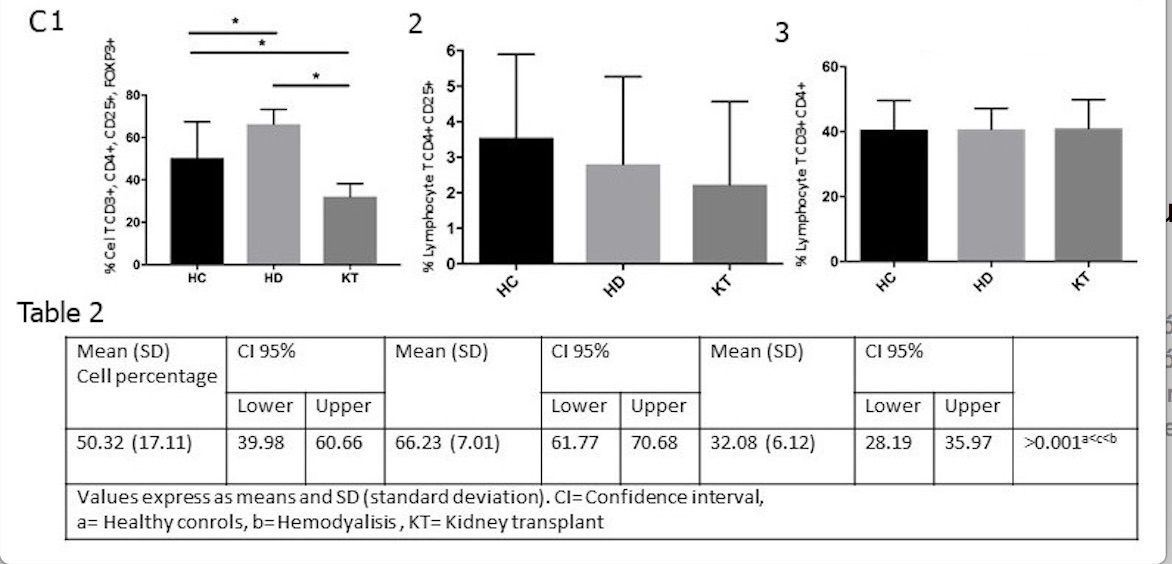Peripheral Blood Regulatory T Cells Are Diminished in Kidney-Transplant Patients with Chronic Allograft Nephropathy
Gloria Queipo1, Marco Antonio Carmona2,3, Luis-Antonio García Mosqueda2, Luis García-Covarrubias3, Miguel Angel Fonseca-Sánchez1, Ricardo Lascurain2.
1Human Genetics, Hospital General de México Eduardo Liceaga-Facultad de Medicina UNAM, Mexico, , Mexico; 2Bioquímica, Facultad de Medicina UNAM, Mexico, , Mexico; 3Transplante de Organos, Hospital General de México-Eduardo Liceaga, Mexico, , Mexico
Introduction: Kidney transplantation (KT) remains the major life-saving treatment for patients with end-stage renal disease. Despite the improvements in immunosuppressive strategies in recent years, late kidney allograft loss is a critical clinical challenge for long-term graft survival Over the past two decades, immunosuppressive drugs have failed to produce substantial long-term graft survival. Kidney allograft recipients, especially those individuals receiving organs from deceased donors, frequently suffer from the slow deterioration of kidney function or chronic allograft nephropathy (CAN). However, defining CAN as an idiopathic and multifactorial entity has precluded more comprehensive studies. Abundant evidence from animal models, as well as limited evidence from humans, involves Tregs in kidney transplant tolerance, although the recognition of allo or self-antigens by Tregs is not clear.
Objective: Investigate the peripheral blood levels of CD4+CD25+FOXP3p3+ regulatory T cells (Tregs) in patients with chronic allograft nephropathy (CAN) one year after kidney transplantation and compare it with chronic disease undergo hemodialysis and healthy controls.
Methods: Twelve renal-transplant patients with an initial onset of CAN, 12 patients with chronic kidney disease (CKD) stage G5 on dialysis, and 13 healthy control individuals were evaluated regarding the proportion of Tregs in their peripheral blood via flow cytometry.
Results: The renal-transplant patients with CAN had a significantly lower proportion of Tregs than the hemodialysis-CKD patients and healthy controls (P<0.01). In contrast, the hemodialysis-CKD patients showed higher levels of Tregs than the renal-transplant patients with CAN and the healthy controls (P<0.01) Figure 1
Conclusion: The high level of peripheral blood Tregs in the hemodialysis-CKD patients suggests a chronic inflammatory state. However, the low frequency of Tregs in the peripheral blood from the renal-transplant patients with CAN suggests an unfavorable prognosis for allograft immune tolerance.
In representation of the work team I would like to state, that there are no known conflicts of interest associated with these work and there has been no significant financial support for this work that could have influenced its outcome.
